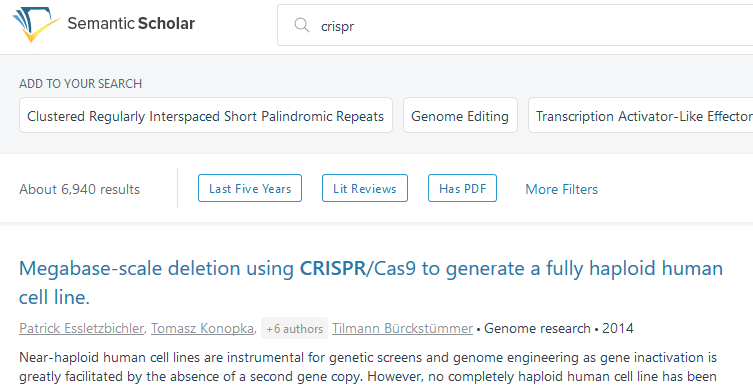Allen Institute for AI’s Semantic Scholar adds biomedical papers to its AI-sorted corpus

Semantic Scholar, an effort to index scientific literature using natural language processing and other AI methods, has added tens of millions of papers to its trove, expanding from computer science into biomedical studies. It’s a good opportunity for people in more fields to try this useful tool.
Created by the Allen Institute for AI, Semantic Scholar scans through the whole text of these papers, correlating them with others to determine specific topics, the content of figures, keywords like drugs and organs, and so on.
There’s so much literature being published now, and it stretches back so far, that it’s practically impossible for a single researcher or even a team to adequately review it. What if a paper from six years ago happened to note a slight effect of a drug byproduct on norepinephrine production, but it wasn’t a main finding, or was in a journal from a different discipline?
Ingesting these millions of papers and tracking such things so researchers can easily find them is the idea behind Semantic Scholar, but until recently the system was limited to computer science papers. Several biomedical domains have now been added — so take a look and see if your paper is part of the corpus now!
 The update to the web tool also includes some UI improvements, surfacing topics and tags it thinks are likely to be related to your search or have been trending in the field recently — a new drug or technique a given user may not know about, for instance.
The update to the web tool also includes some UI improvements, surfacing topics and tags it thinks are likely to be related to your search or have been trending in the field recently — a new drug or technique a given user may not know about, for instance.
Anyone can use the tool, though obviously not everyone will find it useful — if you’re looking for common cold remedies, or you’re a paleontologist, there’s nothing here for you. But that may change as the number of papers tracked by Semantic Scholar piles up.
Featured Image: AI2